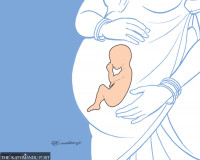Health
Sharp rise in sexually transmitted diseases among female sex workers in Pokhara
Study among 364 workers shows over 44 percent of female sex workers are employed in Dohori restaurants, followed by 17.5 percent from cabin restaurants and 15 percent in massage centres.
Arjun Poudel
There has been a sharp rise in sexually transmitted diseases, especially syphilis, among female sex workers in Pokhara, according to an integrated biological and behavioural surveillance carried out by the Nepal Health Research Council in 2023.
Syphilis, a sexually transmitted infectious disease caused by the bacterium treponema pallidum, has increased to 14.8 percent in 2023 from 0.6 percent in 2011, according to the new report unveiled recently.
“Syphilis displayed more significant variability, peaking at 4 percent in 2004, declining to 0.6 percent in 2011, and then sharply increasing to 14.8 percent in 2023,” reads the report. “The prevalence of HIV remained relatively steady, varying between 2 percent and 1.1 percent, a slight uptick observed in 2023.”
The study, which was carried out on 364 female sex workers, also shows substance use—alcohol consumption and drug use, with some engaging in risky behaviours related to substance exchange.
“Alcohol and drug use were reported in only 10.4 percent indicating drug use, and 2.7 percent exchanging sex for drugs,” the report stated. “Around 55 percent never had an HIV test, and 76.4 percent never heard of Hepatitis C infection.”
Up to 3.9 percent of workers were not aware of STIs (sexually transmitted infections), their symptoms, and treatment while 15.3 percent were getting treatment for STI. Of them, 55.9 percent chose private clinics for treatment.
Dohori restaurants serve as the primary workplace for 44.3 percent of these sex workers, followed by cabin restaurants at 17.5 percent, and massage centres at 15 percent.
Dohari restaurants are eateries where patrons can enjoy dining while being entertained by live Nepali duet performances. Cabin restaurants are eateries with private booths where patrons can enjoy meals with a degree of privacy.
Most of the respondents explained their financial hardships as a major reason for initiating this line of work.
“My husband treats me badly and does not look after our son, so to take care of my son
and his education I got engaged in this profession” the report quoted a 28-year-old female sex worker was quoted as saying.
Some female sex workers, who were interviewed for the study, expressed feeling guilty in the initial stage about having to use sex as a means to earn money. However, they reported feeling accustomed to it after a year.
Some sex workers said that due to their limited education and fewer job prospects, they were okay with their current line of work.
“I am not well educated, and there are not many job options available to me, so I am uncertain about my future. For now, I am fine with the work I am doing,” the report quoted a 30-year-old female sex worker as saying.
Around 45 percent female sex workers had one client daily, while 70.3 percent had one to five clients weekly. Condom usage was practised by almost 65 percent of female sex workers with their male clients. Only 10.4 percent reported drug use, including 3 percent who exchanged sex for drugs.
Knowledge gaps were evident, with 54.9 percent never having tested for HIV. Awareness of STIs, particularly Hepatitis C, was lacking.
The report emphasised regular HIV testing as crucial, given that more than half of the participants were found to have never undergone an HIV test. Implementing a community-based screening programme for HIV, syphilis, Hepatitis B and C is essential to lessen the disease burden, according to the report.
Data was collected through face-to-face interviews using a structured questionnaire. Blood samples were collected from the participants for serological analysis for HIV, HBV, HCV, and STI screening.
The median age of female sex workers was 30 years and they came from diverse ethnic groups including Janajatis in higher numbers, and Dalits. Regarding their educational status, 35.7 percent had secondary-level education. The majority, 77.7 percent, were married at least once.
Under the heading childbirth and family planning, 88.3 percent reported childbirth. Miscarriage affected 21.7 percent, with condom usage being the preferred family planning method (53.5 percent). In terms of sexual behaviour, over a quarter initiated sexual activity before the age of 20, with an average age of first sexual encounter at 16.89 years.
Integrated Biological and Behavioral Surveillance (IBBS) surveys are being conducted at regular intervals in Nepal.




 15.69°C Kathmandu
15.69°C Kathmandu














